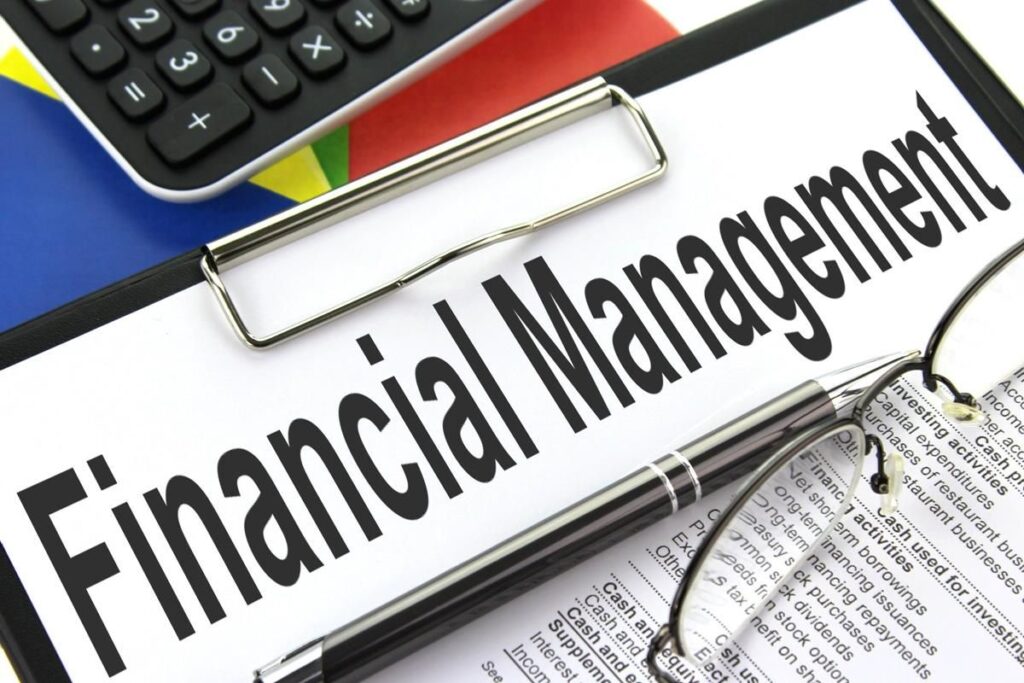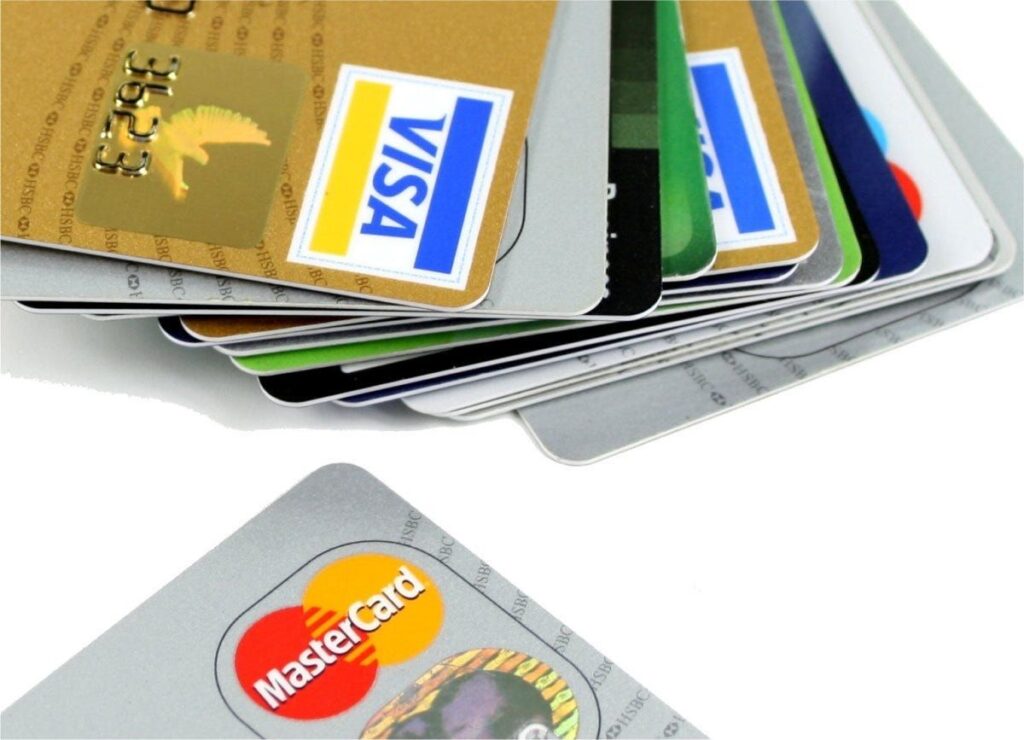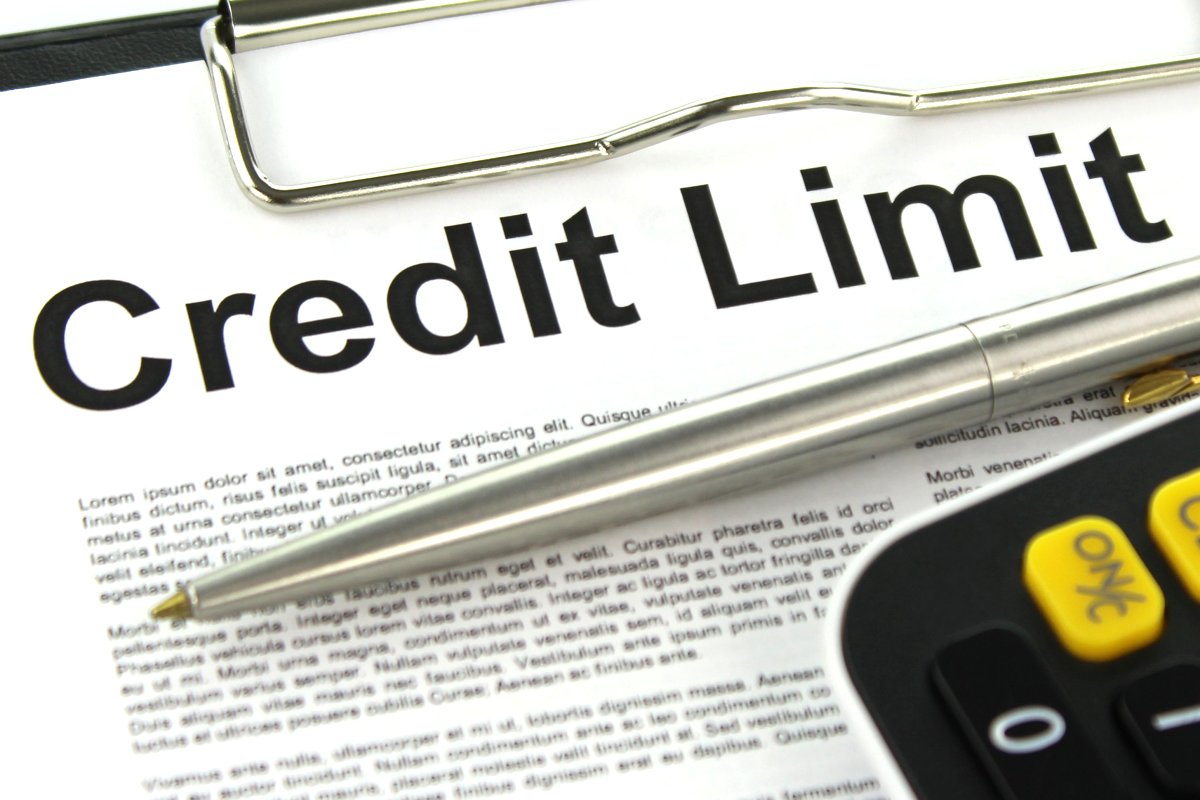
In today’s financial landscape, your credit score is far more than just a number; it’s a vital indicator of your financial health and a gateway to opportunities. A strong credit score can unlock lower interest rates on loans, secure better terms on credit cards, and even influence your ability to rent an apartment or get a cell phone contract. Conversely, a low score can present significant hurdles, making everyday financial transactions more challenging and costly. Understanding how your credit score works and, more importantly, how to improve it, is one of the most empowering financial steps you can take.
Many people feel daunted by the prospect of improving their credit, often believing it’s a slow, complex process with no quick wins. While it’s true that building excellent credit takes time and consistency, there are numerous actionable strategies that can yield positive results much faster than you might imagine. Whether you’re starting from scratch, recovering from past financial missteps, or simply looking to elevate an already good score, identifying and implementing the right tactics is key. A focused approach can truly make a difference in a relatively short period, setting you on a path to greater financial freedom.
We understand the common financial pain points that can arise from a less-than-ideal credit score, and our goal is to empower you with clear, practical steps. This guide is designed to simplify complex financial topics, offering well-researched recommendations backed by expert insights. We’ll walk you through twelve distinct strategies that can help you build a stronger credit profile, providing comprehensive details without unnecessary jargon. Let’s dive into the foundational actions that can begin to transform your credit score and open up a world of financial possibilities.

1. **Prioritize On-Time Payments**No strategy to improve your credit will be effective if you pay bills late. Your payment history is the largest scoring factor in both FICO and VantageScore credit scoring systems, accounting for a significant 35% of your FICO® Score. This makes on-time payments the single most influential action you can take to positively impact your credit. Every payment—whether on time, late, or missed—is reported to the national consumer credit bureaus, directly shaping your credit narrative.
Late payments, especially those missed by 30 days or more, can remain on your credit reports for a staggering seven years, casting a long shadow over your financial trustworthiness. Even if a payment is only a few days late, it can have a negative impact. The impact of delinquent payments does fade over time, but consistently adding more positive credit accounts and ensuring timely payments going forward is crucial to speed up this recovery. Each month that an account is marked delinquent hurts your score, underscoring the urgency of staying current.
If you find yourself in a situation where you’ve missed a payment by 30 days or more, pay the outstanding balance immediately. After doing so, proactively reach out to the creditor by phone or online chat and politely ask if they would consider no longer reporting the missed payment to the credit bureaus. This approach is more likely to succeed if it’s a one-time occurrence and you have a solid track record of on-time payments. Even if they don’t agree, bringing your account up to date as soon as possible is still vital.
Preventing missed payments is easier than dealing with their fallout. A low time commitment is required to set up account reminders, whether through calendar alerts or by enabling automatic payments to cover at least the minimum due. You can also register for services like Experian Boost®ø to get credit for payments not traditionally reported, such as eligible rent, utilities, cellphone, and even some streaming subscriptions. Adding these payments could instantly increase your credit scores powered by Experian, reinforcing your positive payment habits.
How fast can this work? This varies greatly depending on how many payments you’ve missed and how recently, as well as the severity of the lateness (30, 60, 90, or more days past due). You may see a steady rise in your score as you consistently pay your bills on time. Issuers report your payment behavior to the credit bureaus every 30 days, so positive steps can help your credit quickly, laying a strong foundation for future improvements.
Read more about: Navigating 2025: Why Leasing a Truck Could Be the Smartest Financial Move for Owner-Operators

2. **Optimize Credit Utilization**Your credit utilization rate is a powerful determinant of your credit score, typically ranking as the second-biggest factor after payment history and accounting for 30% of your FICO® Score. This rate refers to the portion of your available credit limits that you are currently using at any given time. Lenders and creditors pay close attention to this metric, as borrowers with a high utilization rate are, on average, less likely to pay back what they have borrowed.
While some experts recommend keeping your utilization rate below 30% on any given card and across all accounts, lower is always better. The individuals boasting the highest credit scores often maintain credit utilization in the single digits, demonstrating exceptional financial management. Being at or near your overall credit limit signals a higher risk to lenders, potentially leading to a lower credit score.
To effectively manage and optimize your credit utilization, you have several actionable strategies. The most direct approach is to pay down your balances before the billing cycle ends. If your income is less reliable, consider making smaller, more frequent payments throughout the month to consistently keep your balance low. Utilizing seasonal work income, tax refunds, or even gifts to significantly reduce your balance can also provide a quick boost.
Understanding when your card issuer reports to the credit bureaus is crucial for maximizing this strategy. You can typically find information indicating a reporting date on your statement, likely around the end of your billing cycle. Alternatively, a quick call to your card issuer’s customer service line can provide you with specific dates or timeframes and inform you which bureaus they report to. This insight allows you to strategically time your payments for maximum impact.
Optimizing your credit utilization can work very fast. As soon as your credit card issuer reports a lower balance to the credit bureaus, that lower utilization will be immediately factored into the calculation of your score. This strategy requires a low to medium time commitment initially to set up calendar reminders or alerts, but the continuous effort of managing balances can lead to rapid and significant improvements in your credit score, making it a highly influential tactic.
Read more about: Taylor Swift’s Global Tax Playbook: 12 Key Strategies for International Income and Unlocking Expat Advantages
3. **Request Credit Limit Increases**One of the most effective, yet often overlooked, ways to swiftly improve your credit score is by strategically asking for a higher credit limit. When your credit limit increases while your balance remains the same, it immediately lowers your overall credit utilization rate. As we’ve established, utilization is a large factor in credit scores, so a reduction in this ratio can provide a significant and quick boost to your credit standing.
Before making this request, it’s wise to assess your financial situation. If you’ve experienced positive changes, such as an increase in income, or have accumulated more years of positive credit history, you are likely in an excellent position to successfully request a higher limit. Lenders view these improvements as indicators of increased financial stability and a reduced risk of default, making them more inclined to grant your request.
However, this strategy comes with an important caveat: self-awareness. Before you ask for a credit limit increase, you must honestly plan how you will keep your spending habits steady and, crucially, avoid using the additional credit. If those higher limits present an irresistible temptation to spend more, this strategy might not be the best fit for you. The goal is to improve your utilization ratio, not to incur more debt.
The time commitment for this action is generally low. Simply contact your credit card issuer and inquire about obtaining a higher limit. During this conversation, it’s also worth asking if it’s possible to avoid a “hard” credit inquiry. A hard inquiry, which typically occurs when you apply for new credit, can temporarily drop your score by a few points. Some issuers may offer increases without a hard inquiry, especially if you have a strong existing relationship and good payment history.
How fast can this work? Very fast. Once the higher limit is reported to the credit bureaus, it will instantly lower your overall credit utilization, assuming you do not spend the additional available credit. This makes requesting a credit limit increase a highly influential and rapid-acting strategy for improving your credit score, provided you manage your spending responsibly.
Read more about: Mastering Your Premiums: 12 Proven Ways to Slash Car Insurance Costs, Including Top Models and State-Specific Strategies for 2025

4. **Become an Authorized User**Becoming an authorized user on someone else’s credit card account can be a remarkably effective way to build or boost your credit score, particularly if you’re new to credit or have a thin credit file. This strategy allows you to benefit from someone else’s positive credit history without needing to take on primary responsibility for the debt. The account holder, often a trusted relative or mentor, simply adds you to their account.
The beauty of this approach is that the account holder doesn’t even have to let you use the card or give you the account number for your credit to improve. Your credit profile benefits because the entire payment history and credit limit of that established, well-managed account can then appear on your credit report. This instantly adds a layer of positive data to your file, showcasing responsible credit use, even if you’re not actively making purchases.
To maximize the positive impact, ensure that the account reports to all three major credit bureaus: Equifax, Experian, and TransUnion. Most credit cards do, but it’s always good to confirm. More importantly, make sure the primary account holder has a high credit limit and, crucially, an excellent history of on-time payments and low credit utilization. An account with late payments or high balances could inadvertently harm your score, so choose wisely.
This method can have a potentially high impact, especially for individuals who are new to credit and lack an extensive financial history. For those with established credit who are trying to offset past missteps or lower their credit utilization, the effect might be smaller but still beneficial. One Reddit user reported going from a 496 to a 660 in three months by being added as an authorized user, illustrating its potential.
The time commitment is low to medium, primarily involving discussions with the account holder about access and usage. The impact can be fast; as soon as you’re added and the lender reports the updated information to the bureaus, the account can begin to benefit your credit profile. This rapid effect makes it a compelling option for quick credit improvement, provided you partner with a financially responsible individual.
Read more about: Financial Scrutiny: High Stakes and Hard Lessons from 14 Music Icons’ Ventures into the Volatile World of NFTs and Crypto

5. **Dispute Credit Report Errors**Even with the most diligent financial habits, a mistake on one of your credit reports could be silently dragging down your score. Inaccurate credit report information can have a significant negative impact, especially if it’s a serious issue like a payment incorrectly marked late or someone else’s credit activity being mixed with yours. Disputing and removing these errors can be one of the quickest ways to improve your credit score.
You are entitled to free weekly reports from each of the three major credit bureaus. Utilize AnnualCreditReport.com to request these reports, then scrutinize them carefully for any discrepancies. Look for payments marked late when you paid on time, accounts that don’t belong to you, or even negative information such as bankruptcies, accounts in collections, or foreclosures that are too old to be listed anymore—typically after seven years. Fraudulent accounts resulting from identity theft can also create multiple derogatory marks that need addressing.
If you find inaccurate or fraudulent information, you have the right to dispute it with the credit reporting agencies. Start by getting your free Experian credit report, and request your free weekly Equifax and TransUnion reports. Follow the dispute process with each relevant credit bureau to initiate an investigation. The process involves submitting documentation to support your claim, so gather any evidence you have, such as bank statements or payment confirmations.
The score impact can vary dramatically but could be substantially high if a creditor is reporting that you missed a payment when you didn’t. Correcting such a serious error can lead to a considerable jump in your score. If the credit bureau determines your dispute is valid, it will correct or remove the negative information, often resulting in a credit score improvement.
While the time commitment can be medium to high—requiring time to request and read reports, submit disputes, and track follow-up—the process is undeniably worthwhile. Credit disputes are typically resolved within 30 to 45 days. This makes disputing errors a potentially fast and highly impactful strategy, particularly if you’re trying to build credit ahead of a major milestone like applying for a large loan. Getting disputes done with plenty of time to spare before a mortgage application, for example, is highly recommended.
Read more about: Exposing the 15 Sneaky Car Dealership Tricks That Cost You Billions: A Consumer Reports Guide to Savvy Car Buying

6. **Address Collections Accounts**An account in collections represents a serious negative mark on your credit report, signaling to lenders that you have failed to pay a debt. Dealing with these accounts proactively is a crucial step towards improving your credit score. Paying off a collections account removes the immediate threat that you will be sued over the debt, and critically, it opens the door to negotiating a better outcome for your credit report.
Once you’ve paid off a collections account, you may be able to persuade the collection agency to stop reporting the debt to the credit bureaus. This is often referred to as a “pay-for-delete” negotiation, where you agree to pay the debt in exchange for its removal from your credit report. Even if they don’t agree to remove it, simply paying it off can still be beneficial. You can also have collections accounts removed from your credit reports if they are not accurate or if they’ve aged off your credit report but are still erroneously listed.
The score impact of addressing collections accounts varies significantly, largely depending on the credit scoring model being used. An account in collections is a serious negative mark, so if the collector agrees to stop reporting the account entirely, it could help a great deal. If the collector keeps reporting the account, the effect is more nuanced. The FICO 8 model, which is most widely used for credit decisions, still takes paid collections into account. However, more recent FICO models and VantageScores are designed to ignore paid-off collections, meaning your score could improve significantly once the “paid” status is reported.
The time commitment for this strategy is medium. You’ll need to request and read your credit reports, specifically identifying any collections accounts that are listed. Following this, you’ll need to formulate a plan to either pay them off, dispute inaccuracies, or negotiate for their removal. This can involve communication with collection agencies, which may take some persistence.
How fast could it work? Moderately quickly. For credit scores that do not factor in paid collections, like VantageScore and newer FICO models, your score can improve as soon as the paid-off status is reported to the credit bureaus. In other cases, such as disputing a collection account or asking for a goodwill deletion, the process could take a few months to fully resolve and reflect on your score. Reddit users have reported seeing substantial jumps, with one user stating they saw a score increase from 540 to 660 in three months after paying off collections, highlighting the powerful potential of this action.
Read more about: Buyer Beware: Major Credit Cards Ban Transactions on Fake Sites Spoofing These 11 Retailers
7. **Utilize Secured Credit Cards**For those looking to establish credit for the first time or rebuild after past missteps, a secured credit card offers a structured and effective path forward. Unlike traditional credit cards, a secured card requires a cash deposit upfront. This deposit acts as collateral, typically matching your credit limit, which mitigates risk for the issuer and makes it accessible to individuals with limited or damaged credit history.
Using a secured credit card is much like using any other credit card: you make purchases, and you’re expected to pay your bill on time each month. It’s these consistent, on-time payments that are regularly reported to the major credit bureaus—Equifax, Experian, and TransUnion—helping you to build a positive payment history. The key is to demonstrate responsible credit management, proving your ability to handle credit wisely without accumulating debt.
The impact of a secured card can vary, but it’s particularly beneficial for individuals with a thin credit file or those needing to dilute negative entries on their report. Paying your bill diligently is paramount; a missed payment could result in a late fee or even lead to the issuer using your deposit to cover the debt, undermining your efforts. Therefore, it’s crucial to seek out a secured card that explicitly reports to all three major credit bureaus to maximize its positive influence on your comprehensive credit profile.
While the primary goal isn’t just to add another card, but rather to cultivate a strong record of low balances and timely payments, this strategy does take some time to yield significant results, typically several months. This steady approach focuses on long-term credit building, allowing you to gradually demonstrate financial responsibility and foster an improved credit score. If a secured card is not feasible due to the deposit requirement, exploring alternative credit cards that do not require a security deposit may also be a viable option for some.
Read more about: Mastering Travel Safety: 14 Lifehacks to Outsmart Pickpockets and Protect Your Valuables

8. **Leverage Rent & Utility Payments**Traditionally, your monthly rent and utility payments—such as those for electricity, gas, water, and even cellphone and streaming services—have not been factored into mainstream credit scoring models like FICO 8. This often leaves responsible payers without recognition for their consistent financial habits, especially for those who cannot afford a mortgage, which inherently builds credit history. However, new avenues have emerged to ensure these regular, on-time payments contribute positively to your credit profile.
Rent-reporting services provide a valuable solution by adding your consistent rent payments to your credit reports. While not every scoring model considers these entries (VantageScores do, but FICO 8 typically does not), their presence on your report can still be highly beneficial. Should a prospective creditor or lender review your credit history, a long, reliable record of on-time rent payments will serve as a strong indicator of your financial reliability.
Another powerful tool at your disposal is Experian Boost®. This free service allows you to link your bank accounts, which then scans for eligible payments towards streaming services, phone bills, utility bills, and even rent. You have the flexibility to choose which of these payments you want added to your Experian credit report. Adding these payments can instantly bolster your credit scores powered by Experian, offering a swift impact on your profile.
The time commitment for setting up rent and utility reporting is generally low, with minimal ongoing effort required after the initial setup. The speed at which you see results can vary; Experian Boost® works instantly for qualifying payments. For rent-reporting services, some offer an instant “lookback” to include up to two years of past payments, providing an immediate boost. Without such a feature, it might take a few months to build a substantial record of on-time payments, but the cumulative benefit over time can be significant.
Read more about: A Financial Advisor’s Blueprint: 15 Essential Investment Strategies for a Secure Retirement in 2025
9. **Diversify Your Credit Mix**Your credit mix plays a noteworthy role in your FICO® Score, accounting for 10% of its calculation. This factor assesses your ability to manage different types of credit accounts effectively, such as a healthy balance of revolving credit (like credit cards) and installment loans (like car loans or mortgages). A diverse credit portfolio demonstrates versatility and responsible financial management to potential lenders, which can strengthen your overall financial profile.
For instance, an individual who successfully manages two credit cards, an auto loan, and a mortgage presents a stronger credit mix than someone with only a single credit card. This varied exposure indicates that you are proficient in handling different financial obligations. While credit mix generally isn’t the primary determinant for loan eligibility, it can be the distinguishing factor that elevates an already good credit score to an excellent one, opening doors to even better terms and rates.
If you find yourself with only credit cards, or predominantly loans, intentionally adding a different type of account can be beneficial. A credit-builder loan, for example, serves as a low-cost option if a secured card isn’t suitable due to its deposit requirement. When considering any new account, whether it’s a credit-builder loan or a new credit card, always confirm that the issuer reports to all three major credit bureaus—Equifax, Experian, and TransUnion—to ensure your efforts positively impact your credit.
Beyond improving your credit mix, strategically opening a new credit card can also reduce your overall credit utilization by increasing your total available credit, assuming you don’t increase your spending. While this strategy involves a medium time commitment to research and apply for new accounts, and potentially weighing interest and fees, the impact can be fast. As soon as the new account’s activity is reported to the credit bureaus, it can begin to positively influence your score, especially for those with few accounts or short credit histories.
Read more about: From Child Star to Industry Powerhouse: JoJo’s Unstoppable Evolution in Music and Beyond

10. **Maintain Oldest Accounts**The longevity of your credit history is a significant factor in your FICO® Score, influencing 15% of its calculation. This metric considers the age of your oldest and newest accounts, as well as the average age of all your open accounts. Maintaining older credit accounts in good standing demonstrates a long-term track record of financial responsibility, which is highly valued by lenders.
Closing an old credit card account, particularly if it’s one of your oldest or has a high credit limit, can inadvertently harm your credit score. When an account is closed, you immediately lose its available credit, which can cause your credit utilization rate to spike if you carry balances on other cards. This sudden increase in utilization can have a quick and negative impact on your score, even if your payment history on that closed card remains on your report for up to ten years.
Even if you no longer frequently use your oldest credit card, there are simple strategies to keep it active and beneficial to your credit profile. Consider making a small purchase on the card every few months, or assign a small, recurring bill to it and set up automatic payments. This ensures the account remains active and continues to report positive payment history without requiring significant effort.
If the card no longer aligns with your financial needs or incurs an annual fee, explore options to upgrade or downgrade the card with your issuer. Often, you can switch to a different product offered by the same bank while retaining your existing account history, preserving the valuable length of your credit file. This strategic approach allows you to adapt your credit tools while safeguarding the positive impact of your long-standing accounts on your score.
Read more about: Demystifying the ‘Average’: A Data Scientist’s Guide to Interpreting Cycling Distances by Age
11. **Limit New Credit Applications**Every time you apply for a new line of credit, lenders typically perform a “hard inquiry” on one or more of your credit reports. This type of inquiry is recorded on your credit file and can temporarily cause a slight dip in your credit score, usually by fewer than five points. While a single hard inquiry might seem negligible, multiple inquiries within a short timeframe, especially for credit cards, can accumulate and have a more noticeable negative effect on your score. This factor, along with the length of time since you last opened a new account, constitutes 10% of your FICO® Score.
The most effective action here is to exercise restraint and only apply for credit when it’s genuinely needed. Avoid the temptation to open numerous new accounts simply for promotional offers or minor benefits. Before formally applying for a loan or credit card, it’s always a smart move to check if the lender offers a “prequalification” option. Prequalification involves a “soft credit check,” which does not impact your credit score, yet provides an estimate of your eligibility and potential loan terms.
For major purchases like a mortgage, auto loan, or student loan, a silver lining exists: newer FICO® Score versions are designed to be more forgiving. They often treat multiple hard inquiries for these specific types of loans as a single inquiry, provided you complete your rate-shopping process within a concentrated timeframe, typically between 14 and 45 days. This allows consumers to compare offers without undue penalty, but the principle of limiting applications still holds.
Hard inquiries remain on your credit reports for up to two years, though their impact on your FICO® Score generally diminishes after one year. Therefore, being mindful of new credit applications is crucial for maintaining a strong credit score. By being selective and strategic about when and how often you apply for new credit, you can minimize potential negative impacts and protect your hard-earned credit standing.
Read more about: Financial Scrutiny: High Stakes and Hard Lessons from 14 Music Icons’ Ventures into the Volatile World of NFTs and Crypto

12. **Pay More Than the Minimum**While making on-time payments is the cornerstone of a healthy credit score, consistently paying more than the minimum due on your outstanding debts offers profound and multifaceted benefits. This proactive approach significantly accelerates your journey out of debt, reduces the total interest paid over the life of the loan, and positively impacts your credit score by lowering your credit utilization rate and demonstrating exceptional financial management.
When you consistently pay down your revolving credit card balances strategically, you actively improve your credit utilization rate—the second-biggest factor in your FICO® Score. By reducing the amount of available credit you’re using, you signal to lenders that you are a responsible borrower who is not overly reliant on credit. This habit can swiftly lead to an improved score, as credit card issuers report updated balance information to the credit bureaus monthly.
If you are managing multiple debts, prioritizing where to apply your extra payments can be highly effective. Strategies like the “debt snowball” (paying off the smallest balance first) or “debt avalanche” (tackling the debt with the highest interest rate first) can provide a structured approach. By making substantial payments on one account while maintaining at least minimum payments on others, you can systematically reduce your overall debt load and free up more funds to accelerate the payoff of subsequent accounts.
Beyond the immediate financial gains, consistently paying more than the minimum cultivates strong financial habits. It empowers you to take control of your debt, rather than letting it control you. This dedication to aggressive debt reduction not only boosts your credit score in the short term but also lays a robust foundation for long-term financial health, enabling you to achieve greater financial freedom and access more favorable credit terms in the future.
Read more about: Demystifying the ‘Average’: A Data Scientist’s Guide to Interpreting Cycling Distances by Age
Cultivating a robust credit score is an ongoing journey, not a destination. While there are no true “quick fixes,” as many Reddit users emphasize that “Rome wasn’t built in a day,” the strategies outlined in this guide provide powerful, actionable steps to empower you. By consistently prioritizing on-time payments, strategically managing your credit utilization, and proactively addressing any potential roadblocks like errors or collections, you are taking concrete steps towards a stronger financial future. Remember, your credit score is a dynamic reflection of your financial habits, and with consistent effort, you can not only boost your score but also build a solid overall credit profile that serves as a gateway to greater financial opportunities and peace of mind.



